Although we are not really into sliders, the
S20's display, ironically enough, might be our favorite thing about it. First
of all, it is stuffed with excellent credentials: IPS technology for wide
viewing angles, with 1,920 x 1,080 pixels crammed into an 11.6-inch panel. Just
as important, though, MSI was very wise in making the screen angle adjustable -
something you will not find on other sliders, or most dockable tablets.
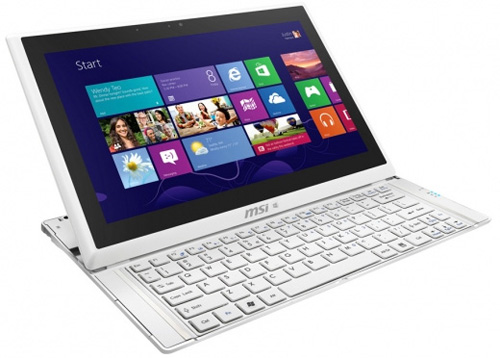
MSI
Slidebook S20
If you have watched our Windows 8 laptop
reviews, you know we do not like the slider form-factor that much. It's not
like we criticized these computers, but time and again we've found that the
propped-up display ruins the typing experience. Please remember that when we
started to evaluate Slidebook S20, MSI's senior Windows 8 device priced at
$1,200 in the US. It's a brave move from one company whose livelihood is not
ultraportables, but gaming systems. In fact, the 11.6 inch S20 is the only
senior Windows 8 Ultrabook of the company. So the company must be pretty confident
in that form factor, then, if it didn't bother with dockable tablets or some
other kind of convertible design. Could that mean the S20 has something all the
others don't?
Look and feel
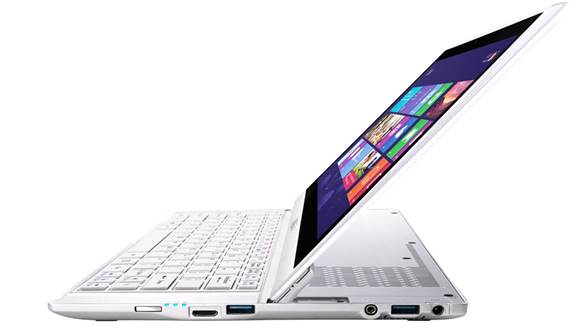
White
plastic, with a few chrome accents thrown in near the keyboard
Back when we first saw the S20 at Computex
2012, we came away wondering if perhaps MSI was returning to its netbook roots.
In short, we are referring to the cramped keyboard but as it happens, our views
can be easily applied to the rest of the design. Part of it related to the
materials used. Except the bottom, which is made of aluminum, the entire device
is made of plastic - white plastic, with a few chrome accents thrown in near
the keyboard. In particular screen is ringed with a wide band of shiny stuff -
it has the same sparkling metallic sheen if you look closely, but from a
distance, it looks simple and shabby.
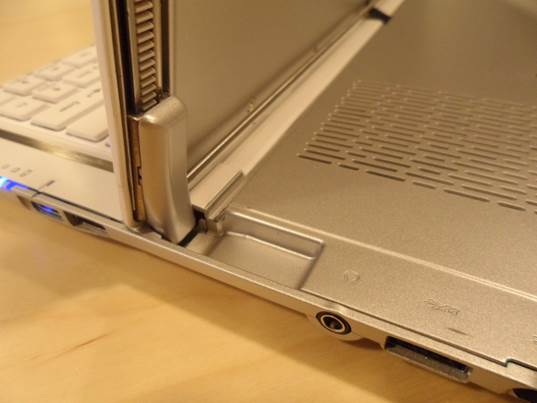
The
sliding form factor utilizes a rail system, with a single metal bar to ensure
the rails are in sync while sliding.
On the plus side, the underbelly - you
know, the area is exposed when you slide the screen up - is much more polished
than the other sliding tablets we've seen, such as the Toshiba Satellite U925t.
That is, you can't see any exposed hinge mechanisms or anything of the same
kind. However, what you will find is one large vent located behind the display
- a compromise for having a completely smooth bottom side. That fan had to go
somewhere, right?
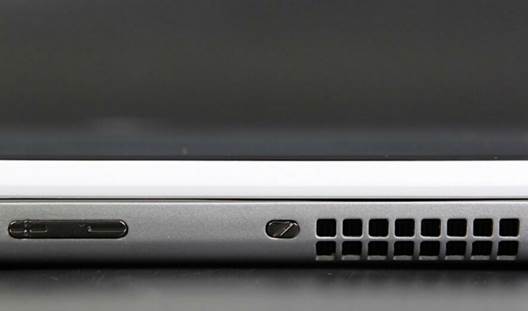
What
you will find is one large vent located behind the display
Apart from that monster, it's the build
quality that we cannot take a serious look at S20. For one computer with the
"slide" in the name, it is extremely difficult to open. Every time
you slide (no, push) the display back, you can feel it is rubbed with a
keyboard underneath. There are other unpleasant details here: if you press the
Start button on the lower bezel while the screen is propped up, the entire
screen moves. The screen is easily to jiggle once it is upright.
If we can offer a ray of sunshine here, MSI
did get the overall shape right. The build quality is not too good but at least
it's comfortable to hold. The curved edges and rounded-off corners mean that it
will never dig into your palm when you are holding it with one hand.
Scattered about the machine is an
impressive collection of ports - Ultrabooks are often lacking in this respect,
with the 11-inch models getting the shortest end of the stick. Yet, somehow,
MSI has stuffed into one Ethernet jack and full-sized HDMI socket, with 2 USB
3.0 connections, 1 audio input and 1 memory card reader, tucked around back.
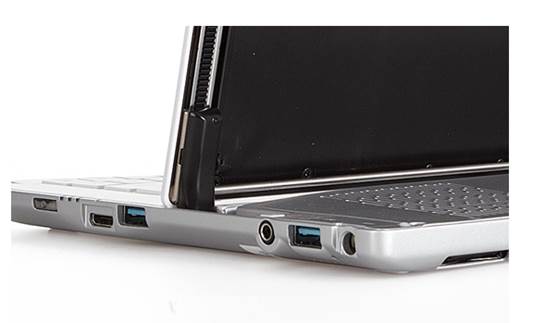
Scattered
about the machine is an impressive collection of ports